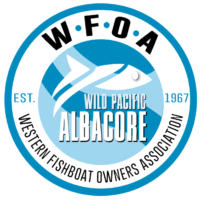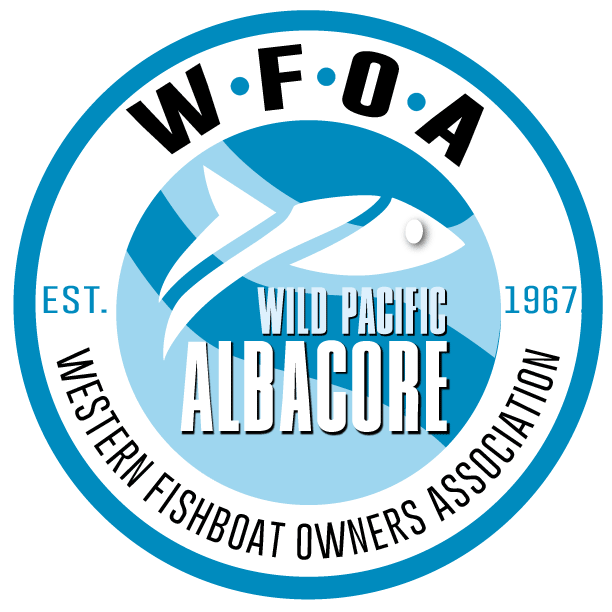ALBACORE BUYING GUIDE
A quality guide for off-the-dock purchasers
by K. S. HILDERBRAND, JR.
Extension Sea Grant seafood processing specialist with Oregon State University
Albacore tuna is one of the premium fish in waters off the Pacific Northwest. This fish appears as “white meat” canned tuna on grocery shelves throughout the United States and is considered the best of all the types of tuna available. Canned skipjack and yellowfin tuna are sold as “light meat,” but only albacore can be labeled as the premium white meat tuna.
In recent years, various economic factors have forced the closing of albacore canneries throughout the Pacific Northwest. The loss of these markets has been a severe blow to commercial fishermen, who have had to find other ways to sell their catch. One available opportunity is to sell albacore directly to you, the consumer.
Seafood connoisseurs consider fresh and fresh-frozen albacore one of the best choices for many kitchen recipes as well as for preservation by smoking and canning. The flavor of good-quality albacore is mild compared with that of other tuna species.
If you buy albacore directly off the dock, you should know how to judge its quality, which can vary for a number of reasons. Top-quality tuna is a result of extra care on the part of the fisherman and often is worth paying a higher price.
But how do you spot good-quality whole albacore? How does quality relate to the way you intend to use the fish?
IDENTIFYING ALBACORE TUNA:

How do you know that the tuna you are buying is albacore? Whole, unprocessed (in-the-round) albacore is easily recognized by its extraordinarily long pectoral fin. This long, narrow fin (one on each side of the fish) stretches back over three-fourths the length of the fish to a point behind the dorsal or top fin.
Other fish may have the characteristic metallic blue-black back with silver underbelly, or the torpedo shape and thin tailfin attachment — but no other tuna, mackerel, bonito, or tuna-like species has a pectoral fin this long.
HARVESTING TUNA:
Albacore Tuna are caught by pole and line methods. In the Northwest, albacore usually are landed by troll boats, which rapidly pull (or troll) 10 to 20 lines through the water — thus the term “troll-caught” albacore.
Albacore trollers preserve the fish with either ice or mechanical refrigeration, because albacore most often are found 50 or more miles from shore — a distance that forces the boats to stay out several days at a time.
It would be unusual for albacore to be caught so close to shore that a quality fish could be brought back to the dock without being chilled. Trolling for tuna typically provides time for proper handling. Top-quality fish will be alive when caught, and will be bled immediately. Bleeding produces a lighter-colored, milder-flavored flesh.
After bleeding, the fish will be packed in ice or refrigerated as soon as possible. Chilling the fish immediately is sometimes not possible because of fishing conditions, but quality fish will be iced or refrigerated within an hour of capture. At this point, the albacore are either chilled or frozen.
Chilling means the fish are kept at or near 32ºF, but the fish is not allowed to actually freeze. Frozen means the fish are kept at subfreezing temperatures until they are sold at the dock.
Once the chilling or freezing process begins, the real battle to maintain fish quality is under way. Quality loss while the fish are in the refrigeration system depends on the type of refrigeration used — and quality loss often can’t be determined by inspecting the outer appearance of the fish.
ALBACORE QUALITY — FRESH VERSUS FROZEN:
The very best fish may or may not be the most expensive fish, but it’s easy to determine this. The very best quality albacore will be well iced or refrigerated and not more than a few days old at the time of sale. Fresh is a term usually applied to fish that has never been frozen, but it is not always true that fresh is best.
Fresh fish that is more than 5 or 6 days old at the time of sale may begin to show serious quality loss, but properly frozen tuna can be almost as good as the best unfrozen fish. In fact, you may be better off buying frozen tuna if you don’t plan to use it the same day you buy it. However, if the best is what you want, learn to recognize it and to appreciate the extra care it took to preserve it for you.
Chilled fresh albacore: Ice is unsurpassed by any other chilling system because it has almost unlimited chilling capacity as long as it lasts. Although ice is expensive and difficult to handle, it can and does produce the best fresh albacore on the dock.
Mechanical refrigeration can involve the use of coils, seawater spray, salt brine, and other devices. Any of these systems can be adequate and can chill fish to temperatures colder than ice. They can produce an excellent quality albacore if they’re operated properly, but the major drawback to these systems is their limited capacity.
An overloaded mechanical chilling system not only damages the extra fish placed in it, but it also lowers the quality of previously chilled fish — and mechanical chilling systems are easily overloaded when fishing is good. Many systems are designed to handle only an average daily fish production and can become overloaded rapidly if fishing success is above average. The result of overloading is excessive fish temperature, accelerated quality loss, and even spoilage.
Frozen albacore: Air blast, spray brine, brine immersion, coil, and shelf freezers are commonly used systems to freeze top-quality albacore. Each has good and bad points from the standpoint of people working in the fishing industry, but all can and do produce good fish. As a dockside buyer, you’ll find it easier to judge the quality of frozen albacore if you know the basics of each type of system.
Freezing systems using salt brine (spray and immersion) rely on the fact that a strong salt brine will not freeze unless its temperature is below 0ºF. Tuna properly exposed to this cold brine will freeze so fast that very little salt is absorbed into the meat. However, if the temperature of the brine is not cold enough, the tuna will absorb salt from the brine and acquire a salty taste. Overloading the system usually is the cause of this problem, just as it is with mechanical chilling. Tuna held for weeks or months at temperatures above 15ºF (but still frozen) can develop severe quality problems.
Air blast, coil, and shelf freezer systems can produce excellent fish, but these have the same limitations as other mechanical systems — overloading still is a problem. These systems do, however, produce a fish with a cold, dry surface — and undesirable thawing is easy to spot. Fish frozen by these methods absorb no salt, but may have a water glaze added to the outside to protect against freezer burn.
In poorly designed freezer systems, the fish may not freeze properly (below 10ºF) for several weeks. The outward signs of such abuse will be dented or partly frozen fish. Unfortunately, the worst quality defects in frozen fish usually are inside — and may not show up until you thaw and use the fish.
CHARACTERISTICS OF GOOD-QUALITY TUNA:
Chilled fresh tuna: High-quality fresh tuna will have a characteristic odor that’s fishy — but not strongly so. The eyes will be clear, and the skin will not be overly slimy. The gills will have a deep red color rather than a brownish pink. The sides of the fish should be silvery rather than dull gray. There should be plenty of ice left on the fish and in the hold of the boat. The temperature inside the fish should be 32ºF or less from boats using either ice or chilled seawater. Bled fish may have an inconspicuous cut behind the chin. In no case should the fish be more than 5 or 6 days out of the water for top quality.
The flesh of top-quality bled fish will not have external dents or internal bruise marks or blood spots. The flesh will remain characteristically white, and will have a pleasant odor when cooked. But note — even good-quality tuna cooked with the skin on usually will have a characteristically unpleasant tuna odor.
A boat may have fish that vary in the time they have been out of the water, so be sure to examine the fish and ask questions. Don’t be afraid to reject the fish if you question its quality. Do not buy tuna that is over 40ºF. Fishermen selling quality tuna will have a thermometer handy, and will not mind showing you that the fish is at 40ºF or less. Fish held for extended periods at temperatures higher than 40ºF can become a safety risk; histamine, which is a toxin, forms from naturally occurring amino acids in tuna and tuna-like species. Histamine can cause mild to severe allergic reactions in susceptible people.
Frozen tuna: High-quality frozen tuna will be brick hard (less than 10ºF) with no external dents. If it has been in a dry-type freezing system, it will be bone dry, but it may collect frost on exposure to air. Brine-frozen fish may look wet, but they’ll still be brick hard and lower than 10ºF. Upon thawing, frozen albacore may appear soft, but their odor will be characteristically fresh and not strong.
Unfortunately, many defects in frozen albacore show up only when you cook it or eat it. Good-quality tuna will cook with a light color and without a salty flavor. A fisherman who is willing to cook samples of his fish for you probably is confident that the tuna is top-quality.
GETTING YOUR FISH HOME FROM THE DOCK:
Pack chilled albacore thoroughly in ice in an insulated container. The shelf life of properly iced fish depends on its age and quality when it was purchased. Don’t wait more than a few days to use the fish.
Pack whole frozen albacore in insulated chests with dry ice if you want more than a few hours of frozen transport and storage. Allowing frozen fish to thaw during the trip home is okay if you plan to use it immediately after thawing — and if its temperature doesn’t rise above 35ºF.
PRESERVING QUALITY ALBACORE:
Albacore tuna are excellent in many recipes and for canning and smoking. However, use some caution when you plan to use whole tuna purchased directly from the boat.
Freezing: Although chilled fish has never been frozen, freezing a whole tuna at home is not a good idea because of the long freezing time required by home freezers. If you want to store a whole tuna, you should buy frozen fish at the dock. On the other hand, cleaning and cutting a chilled, dressed, fresh albacore into steaks or loins to be frozen is fine if you wrap them properly for freezing. You can also glaze frozen whole fish by dipping them momentarily in fresh water before placing them in extended frozen storage. Refreezing loins dressed from whole and thawed frozen fish will not produce good quality. Only top-quality albacore will keep more than a few months in the freezer without tasting and smelling rancid — like linseed oil.
Thawing: Thaw frozen whole albacore in a cool room or in a large tub filled with running, cold, fresh water. Several hours to a day may be required, depending on the water and air temperature and the size of the fish. Tuna that’s partly frozen yet soft enough to cut is easier to handle than completely thawed fish.
Canning: Fish to be canned must not have ice crystals remaining in it when you begin the cooking process. Follow canning directions exactly, and be sure to fully thaw the tuna before you time the cooking cycle. Raw-pack tuna will soon taste rancid if it was not prepared from high-quality fish that is fresh or fresh-frozen. Commercial canners precook albacore to remove natural oil, then replace it with vegetable oil or water for just this reason. Only a few small commercial custom canners pack albacore in its natural oil, and they are very careful to pack only the best quality.
Smoking: Smoking tuna — or any fish, for that matter — will not improve its quality. Smoke may cover up some quality defects, but the quality itself will not improve. Use good-quality albacore to produce good-quality smoked tuna.
IN SUMMARY:
Obtaining the best quality and flavor means searching for the best albacore available from dockside sellers. Do not buy tuna that is warmer than 40ºF. Be sure to look carefully at the fish being sold, and ask questions about when it was caught and how it has been handled. Albacore tuna is considered one of the best choices for home cooking and preservation, and is one of the premium choices available on the West Coast — if you know what you’re looking for.
Additional details and resources for buying directly from fishermen are available at PacificAlbacore.com
=================================================
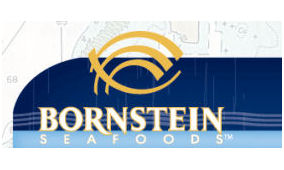 Bornstein Seafoods 1001 Hilton Avenue Bellingham,WA 98225 360-734-7990 colin@bornstein.com bornstein.com  Sassy Seafoods Sassy SeafoodsLibie Cain, Teresa Reeves P.O. Box 706 Westport WA 98595 360-267-6040 info@sassyseafood.com |

Island Trollers
1115 Old Polnell Rd.
Oak Harbor, WA 98277
877-253-2761
islandtrollers@comcast.net
Toll free at 1-877-253-2761
Wild Planet Inc.
1585 Heartwood Dr.
McKinleyville, CA 95519
800-998-9946
info@wildplanetfoods.com
wildplanetfoods.com
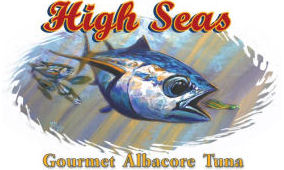
High Seas Gourmet Albacore Tuna
P.O. Box 1574
Langley, WA 98260
360-321-2084
highseastuna@whidbey.com
highseastuna.com

Cal Marine Fish Company
220 Cannery Street
San Pedro, CA 90731
310-547-1144
avuoso@trimarinegroup.com
trimarinegroup.com
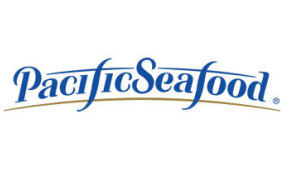
Pacific Seafood
16797 S.E. 130th Ave.
Clackamas, OR 97015
503-905-4500
sspencer@pacseafood.com
pacseafood.com
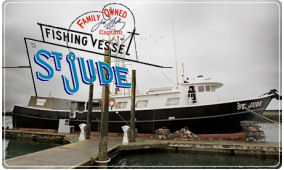
Fishing Vessel St. Jude
Puget Sound WA
425-378-0680
llongnose@aol.com
tunatuna.com
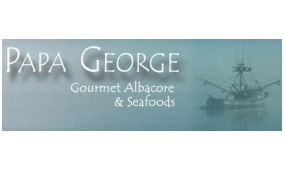
Papa George Tuna
PO Box 824
Lopez Island, WA 98261
206-255-4203
holly@papageorgetuna.com
papageorgetuna.com
Bellingham Cold Storage
2825 Roeder Ave.
P.O. Box 895
Bellingham, WA 98227
360-733-1640
mike.roberts@bellcold.com
bellcold.com

Sacred Sea Albacore
56010 Fairview Rd.
Coquille OR 97423
541-396-6886
rickg@ari1.com
sacredseatuna.com

Humboldt Bay Harbor
707-443-0801
humboldtbay.org
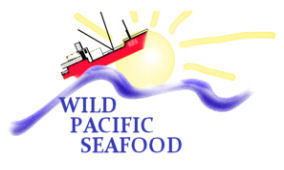
Wild Pacific Seafood
PO Box 955
Deming, WA 98244
360-592-4072
stephanie@wildpacificseafood.com
pelicanpackers.com
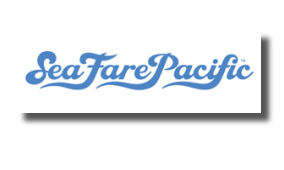
Sea Fare Pacific
723 South 2nd Street
Coos Bay, OR 97420
541-266-TUNA [8862]
seafarepacific.com

Boatseafoods Inc.
Westport, WA
360-580-1012
bmorrisfricke@techline.com
boatseafoods.com
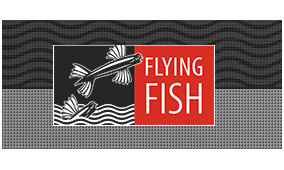
Flying Fish
2234 1st Avenue
Seattle, WA 98121
206-728-8595
flyingfishrestaurant.com
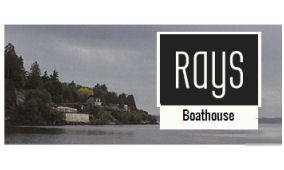
Ray’s Boathouse
6049 Seaview Avenue NW
Seattle, WA 98121
206-728-8595
rays.com

Bamboo Sushi
310 SE 28th Ave.
Portland, OR 97214
503-232-5255
bamboosushipdx.com
FOR MORE INFORMATION:
The following publications can be ordered from:
Sea Grant Communications
Oregon State University
402 Kerr Administration Bldg.
Corvallis, Oregon 97331
Home Freezing of Seafood, EC 1363, by Kenneth S. Hilderbrand, Jr. (Oregon State University, Corvallis, 1993). 50¢
Smoking Fish at Home — Safely, PNW 238, by Kenneth S. Hilderbrand, Jr. (Oregon State University, Corvallis, 1993). 50¢
Canning Seafood, PNW 194, by Carolyn Raab (Oregon State University, Corvallis, 1993). 50¢
Home Canning Smoked Fish, PNW 450, by Carolyn Raab and Kenneth S. Hilderbrand, Jr. (Oregon State University, Corvallis, 1993). 50¢
ORESU-G-95-003, Albacore tuna: A quality guide for off-the-dock purchasers, 75¢
